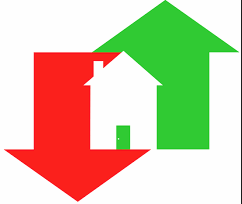Key Takeaways for 2017 – Source Inman News with Doug Duncan, Jonathan Smokes, Steve Cook, Svenja Gudell, and Ralph McLaughlin
Mortgage rates are likely to continue to increase throughout 2017.
There will not be any easing in inventory, and affordability will still be a challenge in big markets.
The potential is there for a large number of first-time buyers to enter the buying market, but they will face new challenges.
It’s been one unprecedented 2016, between the Brexit vote, the continued persistence of low mortgage interest rates, and an election that seemed to temporarily throw markets for a loop. What will the 12 months encompassing 2017 hold in store for housing?
“If income growth picks up, then the rise in interest rates will affect refinancing, but not the home purchase activity. If incomes start to grow more strongly, it probably won’t affect buying as much as refinancing,” Doug Duncan
“There’s a lot that buyers can do to mitigate the effects of rising rates, including looking for lower-priced homes, putting more money down, or changing term lengths on a mortgage’s fixed-rate component.” Jonathan Smokes
“If Trump goes ahead with his infrastructure plan, which is probably a smart thing to do and a no-brainer as far as Congress is concerned, it will stimulate the economy and probably increase pressure on rates,” Steve Cook
Housing inventory — or the lack thereof — was a big deal in 2016, and it will continue to be a problem next year, experts believe.“Historically, you’d want to be much closer to a million homes built or sold, and we’re roughly at half of that, so I don’t think builders are going to have an easy time magically ramping up,” Svenja Gudell.
Inventory will likely fluctuate by market and price point, too. “For people at high ends and expensive properties you may very well see a surge, and the expectation is that tax cuts will come,” said Rodney Ramcharan. “Prior to Trump being President-elect, there was a slowdown at the top end.”
“In general, home values will slow their climb next year,” said Svenja Gudell. “Currently we’re looking at 6-percent-ish annual appreciation; next year it’ll probably be half that, so a little bit of relaxation there, which will also feed into being more of a buyer’s market by the time we reached 2018.”
And how big is the threat of reliving another 2008-like slump?
“It’s been close to seven years since we had a recession,” noted Ralph McLaughlin, “and they tend to move in 7-to-10-year cycles; if it’s not next year then the chances go up. There aren’t any signs yet that that is imminent; there are a lot of signs that suggest otherwise, but there are a lot of wild cards at this point that both buyers, sellers, and agents need to be aware of.”







